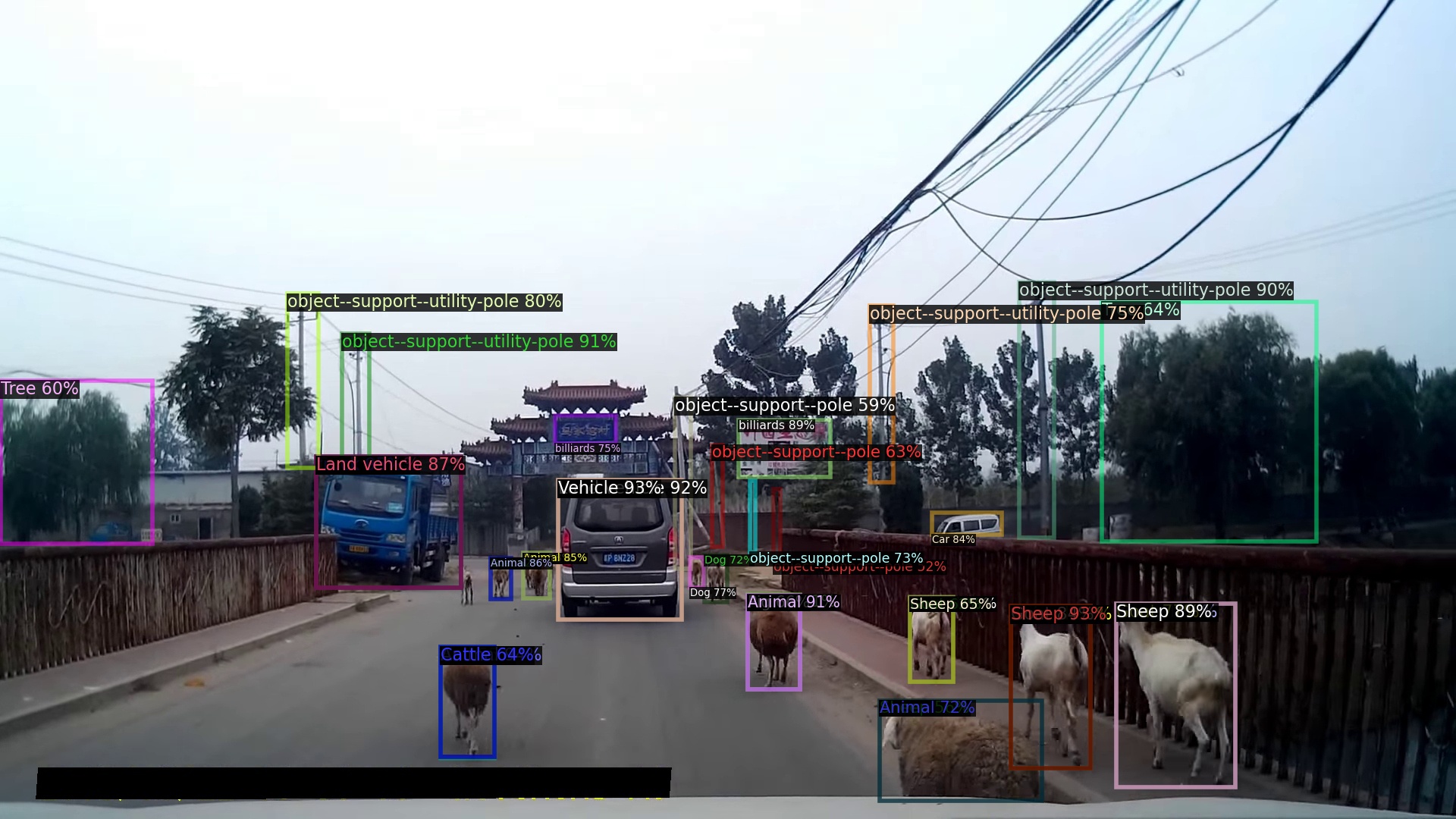Simple multi-dataset detection
An object detector trained on multiple large-scale datasets with a unified label space; Winning solution of ECCV 2020 Robust Vision Challenges.
Abstract
How do we build a general and broad object detection system? We use all labels of all concepts ever annotated. These labels span diverse datasets with potentially inconsistent taxonomies. In this paper, we present a simple method for training a unified detector on multiple large-scale datasets. We use dataset-specific training protocols and losses, but share a common detection architecture with dataset-specific outputs. We show how to automatically integrate these dataset-specific outputs into a common semantic taxonomy. In contrast to prior work, our approach does not require manual taxonomy reconciliation. Our multi-dataset detector performs as well as dataset-specific models on each training domain, but generalizes much better to new unseen domains. Entries based on the presented methodology ranked first in the object detection and instance segmentation tracks of the ECCV 2020 Robust Vision Challenge.
Features at a glance
-
We trained a unified object detector on 4 large-scale detection datasets: COCO, Objects365, OpenImages, and Mapillary, with state-of-the-art performance on all of them.
-
The model predicts class labels in a learned unified label space.
-
The model can be directly used to test on novel datasets outside the training datasets.
-
In this repo, we also provide state-of-the-art baselines for Objects365 and OpenImages.
Main results
| COCO test-challenge | OpenImages public test | Mapillary test | Objects365 val |
|---|---|---|---|
| 52.9 | 60.6 | 25.3 | 33.7 |
Results are obtained using a Cascade-RCNN with ResNeSt200 trained in an 8x schedule.
- Unified model vs. ensemble of dataset-specific models with known test domains.
| COCO | Objects365 | OpenImages | mean. | |
|---|---|---|---|---|
| Unified | 45.4 | 24.4 | 66.0 | 45.3 |
| Dataset-specific models | 42.5 | 24.9 | 65.7 | 44.4 |
Results are obtained using a Cascade-RCNN with Res50 trained in an 8x schedule.
- Zero-shot cross dataset evaluation
| VOC | VIPER | CityScapes | ScanNet | WildDash | CrowdHuman | KITTI | mean | |
|---|---|---|---|---|---|---|---|---|
| Unified | 82.9 | 21.3 | 52.6 | 29.8 | 34.7 | 70.7 | 39.9 | 47.3 |
| Oracle models | 80.3 | 31.8 | 54.6 | 44.7 | - | 80.0 | - | - |
Results are obtained using a Cascade-RCNN with Res50 trained in an 8x schedule.
More models can be found in our MODEL ZOO.
Installation
Our project is developed on detectron2. Please follow the official detectron2 installation. All our code is under projects/UniDet/. In theory, you should be able to copy-paste projects/UniDet/ to the latest detectron2 release or your own detectron2 repo to run our project. There might be API changes in future detectron2 releases that make it incompatible.
Demo
We use the same inference API as detectorn2. To run inference on an image folder using our pretrained model, run
python projects/UniDet/demo/demo.py --config-file projects/UniDet/configs/Unified_learned_OCIM_R50_6x+2x.yaml --input images/*.jpg --opts MODEL.WEIGHTS models/Unified_learned_OCIM_R50_6x+2x.pth
If setup correctly, the output should look like:

*The sample image is from WildDash dataset.
Note that the model predicts all labels in its label hierarchy tree (for example, both vehicle and car for a car), following the protocol in OpenImages.



